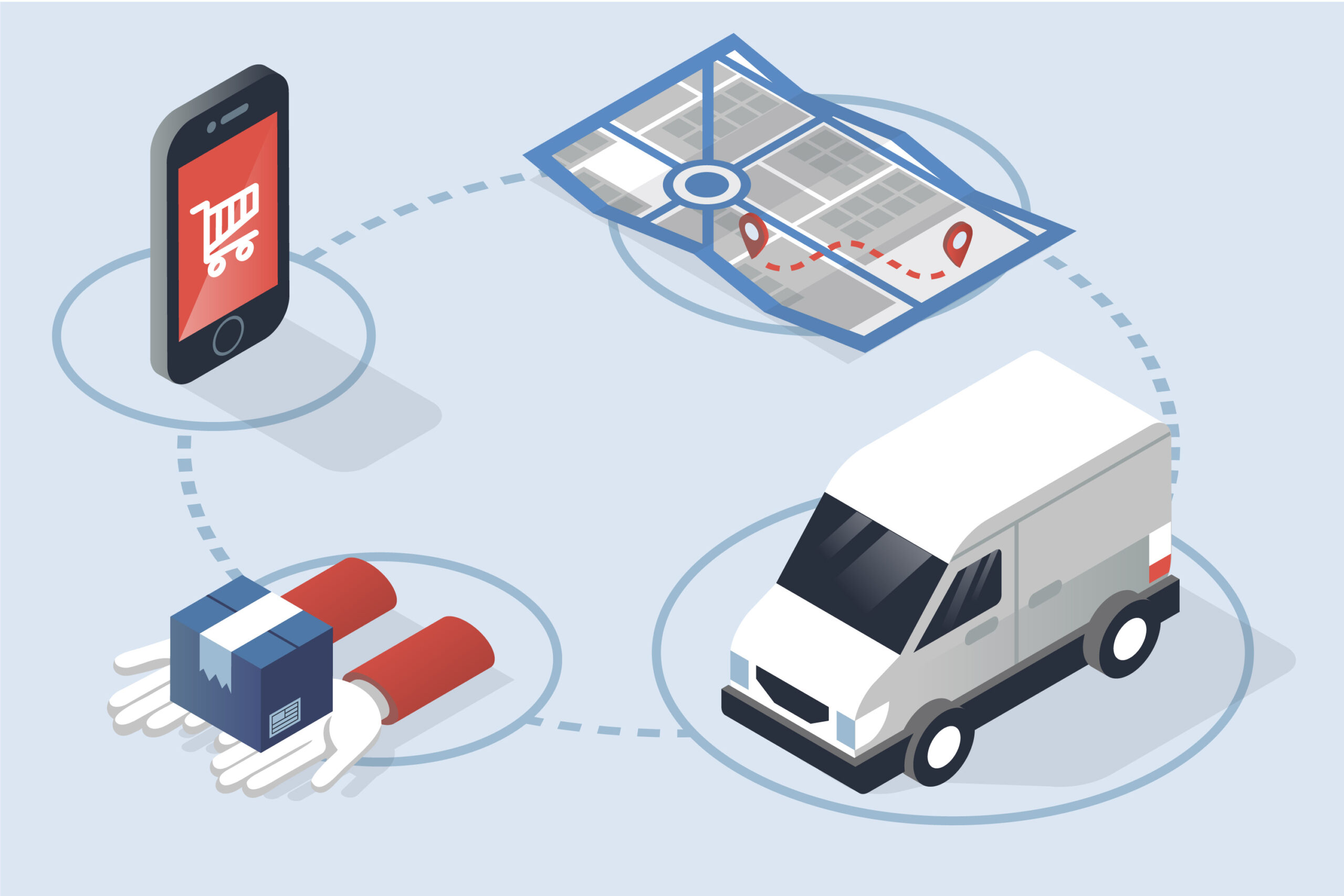5 Ways Tracking Systems Improve Fleet Efficiency
In the rapidly changing business environment of digital transformation, savvy fleet managers are exploring innovative technological solutions to modernize vehicle operations and minimize wasteful spending. Cutting-edge fleet tracking systems provide a powerful way to collect and analyze the vast data generated by daily fleet activities. These systems empower consistent process optimizations across vital functional areas when comprehensively utilized.
Rather than relying on manual, error-prone tracking methods, tracking technology streamlines operations through automated routing, predictive maintenance signals, and data-driven customer service enhancements. This article discusses five impactful ways fleet managers can leverage tracking systems for trucks to boost efficiency.
5 Ways Tracking Systems Improve Fleet Efficiency

Optimized Route Planning
Route optimization is an area where a tracking system excels. Fleet software will pick up geographical distribution patterns, time logistical constraints regarding vehicle carry weights, and dynamic factors such as traffic in real time. This information is used to sequence through an optimal route, and daily operations are performed as effectively as possible.
Further, managers can study the automated route stats to detect redundant loops, unassigned areas for future pickups/deliveries, or other inefficiencies. Problems are solved due to consolidated sequencing, which considers all the variables instead of manually planned routes that often overlook some of the most critical factors.
Furthermore, real-time estimated arrival time alerts help coordinate first-in drivers in case of unexpected traffic or weather. The routing algorithms develop as they learn long-term patterns intrinsically unique to each fleet’s operating environment. Incorporating advanced truck tracking systems further enhances efficiency. These systems provide real-time insights into vehicle location, performance, and potential delays, allowing for proactive adjustments to schedules and routes.
Enhanced Vehicle Maintenance
Telematics has been moving to proactive maintenance of vehicles within an environment to ensure the health and availability of the car. The sophistry of the sensors in tracking devices will keep a constant record of critical engine functions and send reports whenever there is a deviation right away to the maintenance team for proactively booking a diagnosis and repair before they are in for breakdown.
On the other hand, sensors stream data into predictive analytics models, which alert managers on minimal problems, typical of more extensive repairs that are likely approaching. For instance, low fluid levels indicate early patterns of component wear. In this way, regular health care is easily handled through regular repair shop visits. The vehicles also keep running most of the time.
This would be possible only by a well-scheduled technician who knows that there is a more personalized and optimal interval between jobs that fits the actual reality of using each vehicle and the associated duty cycle than a technically standardized time-based prescription independent of the real-world variation. Predictive and customized optimization in maintenance will ensure the operation of a fleet that will sustain assets with an extended lifecycle compared to generic time-based approaches.
Driver Behavior Monitoring
Telematics drive adherence to safer driving habits from the personnel while flagging at-risk behaviour for coaching. Critical competent data, like instances of speed, times of excessive idling that burns fuel integrally, or occurrences of harsh braking that can wear vehicle components with added GPS coordinates and track these.
Sometimes, statistically comparing the available data among drivers reveals troubling spots that repeat quite a few times, which may require infrastructure changes; further, if they repeat, new safe driving procedures or additional training are advised. Dashcams provide visual evidence of incidents, oversights, and safety protocol violations, including potential infringements, which will be reviewed in liability scenarios in which a manager finds themselves should they ever occur.
Further still, performance scores and metrics that serve as the foundation for quantitative data help to observe trends for top performers deserving recognition, those drivers who may need remedial solid coaching following a mandate after a preventable collision, or simply an opportunity for improvement. Last and during a series of follow-up data measures, observation will refine the driving behaviour that will, in turn, lower the risks, accidents, and costs associated with the persistent measured improvements.
Improved Asset Utilization
Strategic fleet monitoring through telematics also optimizes allocating economically valuable vehicle resources. Advanced analytics considering load capacity, vehicle type suitability, and other factors can dispatch the right equipment for each unique job. The software then suggests reallocating underutilized assets based on demand pattern insights to maximize productivity. As a result, excessive inventory carrying excess operating costs is reduced as idle times, travel without payload, and partial-load deliveries are minimized through intelligent coordination.
Besides, mobile workforce management tools synchronized with telematics data help scheduling align field personnel and vehicle resources much closer to required working hours and seasonal fluctuations identified through demand analytics. Hence, avoiding excessive vehicle counts saves money compared to maintaining more units than is strictly necessary. Meanwhile, consolidating deliveries creatively onto optimized routes boosted by intelligent planning can improve overall efficiency and utilization at both the vehicle and personnel levels.
Furthermore, strategic fleet monitoring also supports more proactive scheduling practices. By leveraging demand forecasting based on historical telematics and workflow data, management can anticipate periods of higher activity in advance, allowing for a more flexible workforce model. For example, during peak seasons, a pool of leased or contract vehicles and drivers can supplement the core fleet.
Enhanced Customer Service
Finally, exceptional customer service stems directly from reliable, transparent fulfilment bolstered by technological aids. Features like real-time estimated time of arrival alerts let customers proactively update expectations and plan accordingly. GPS visibility into live vehicle locations reassures clients of steady progress and remedies potential delays before complaints arise.
Additionally, post-trip digitized surveys capture feedback that fuels a cycle of continuous improvements. Service level agreement metrics showcase commitment, which strengthens client relationships. Powerful analytics identify potential service gaps warranting increased focus or optimizations around priority strategic accounts. Joint routing planning between collaborative customers also helps symbiotically consolidate multi-stop deliveries for mutual benefit whenever logistically sensible.
Final Thoughts
When implemented strategically and leveraged to their fullest potential, advanced fleet tracking and management systems set companies up for sustainable competitive advantage through ongoing efficiency gains across all operational facets. Consolidating vast streams of vehicle and personnel operational data into actionable business intelligence optimizes everything from computer-aided route planning to predictive maintenance regiment, driving behaviours, asset allocation, and elevating customer satisfaction standards.
Moreover, over extended periods, accumulated savings from refinements and performance enhancements can substantially compound as systems’ analytical intelligence learns ever more from immense proprietary data sources. Thus, modern fleet managers position their businesses for long-term success by embracing innovative technology approaches that systematically streamline multi-dimensional operations.

















